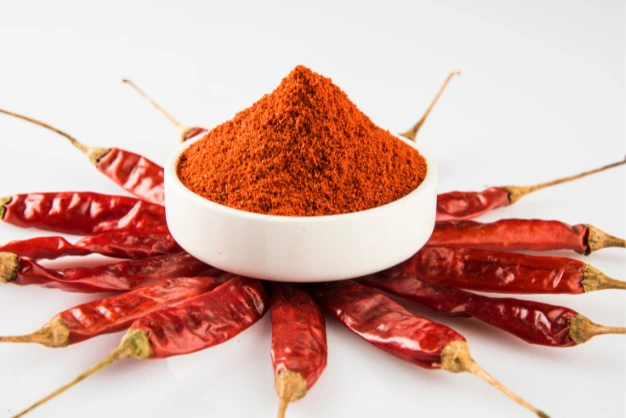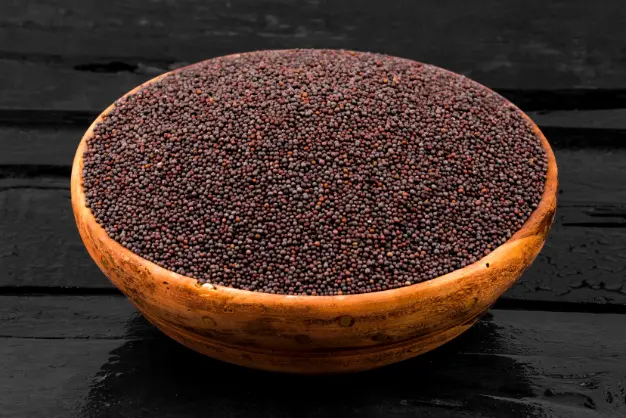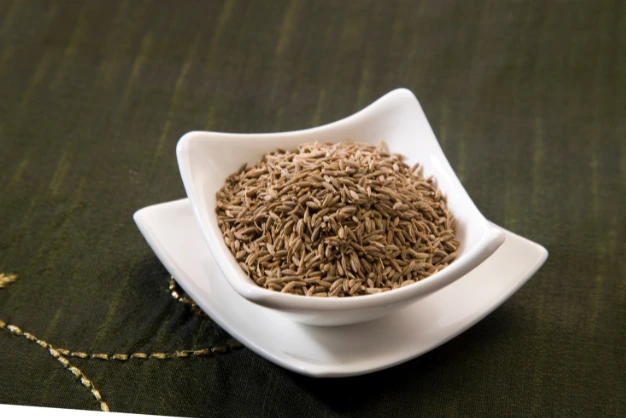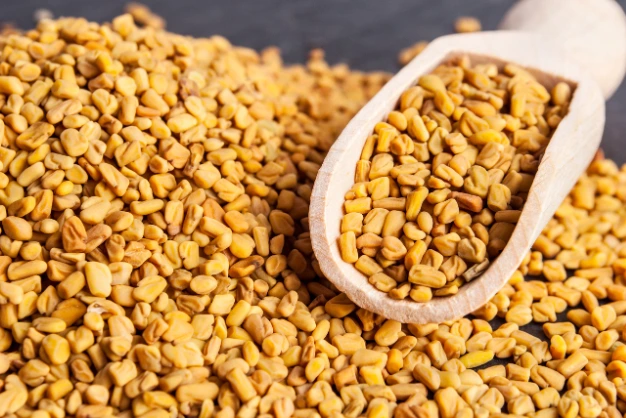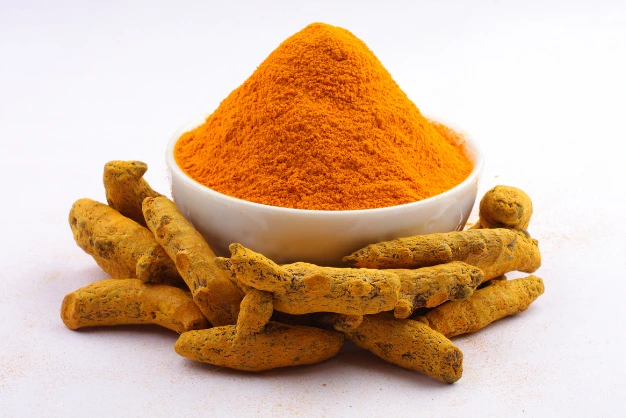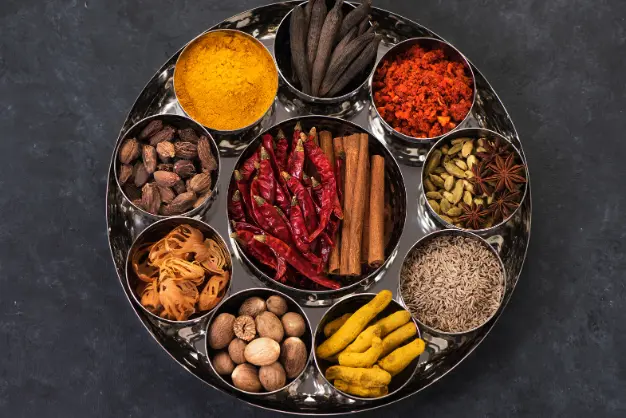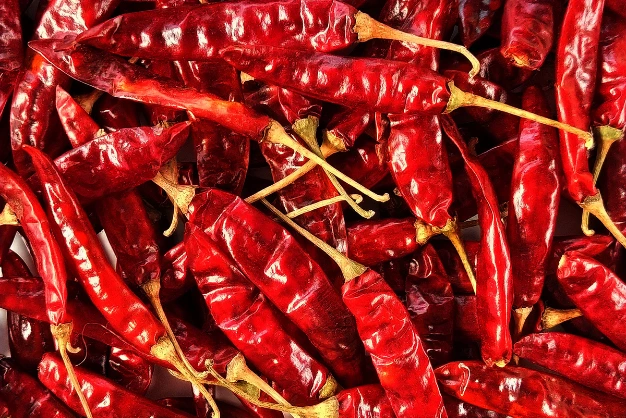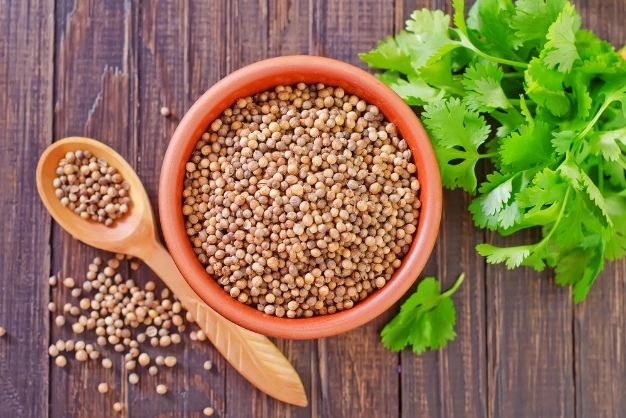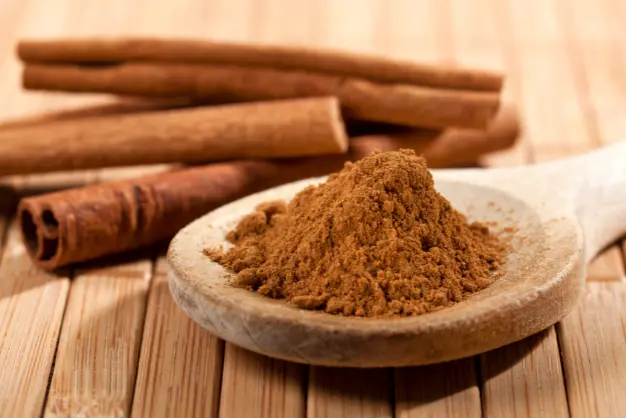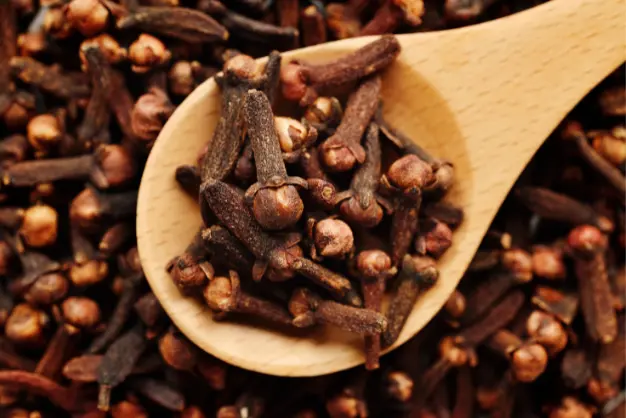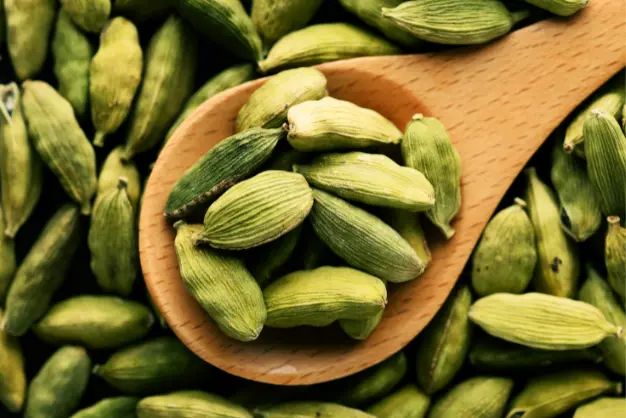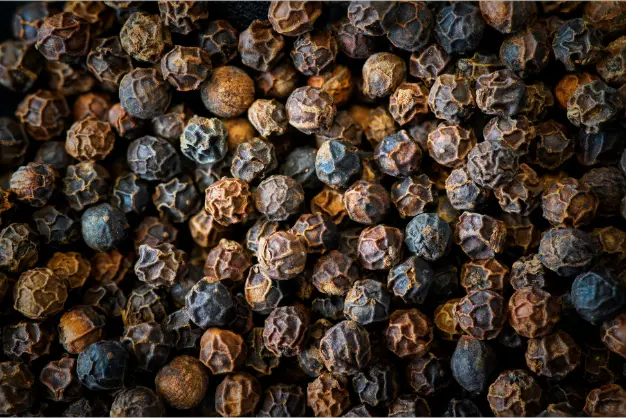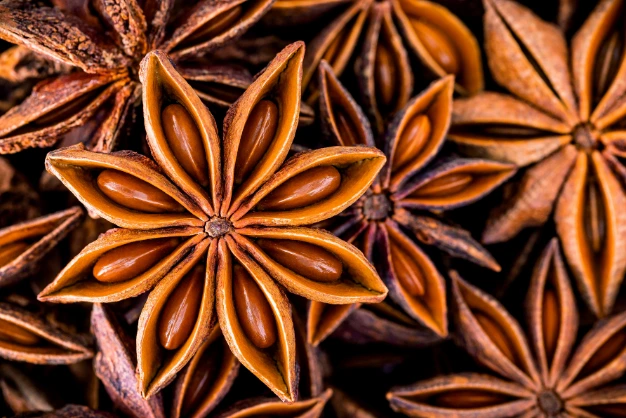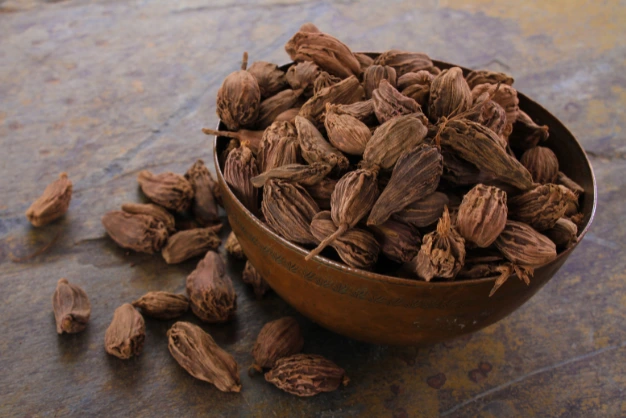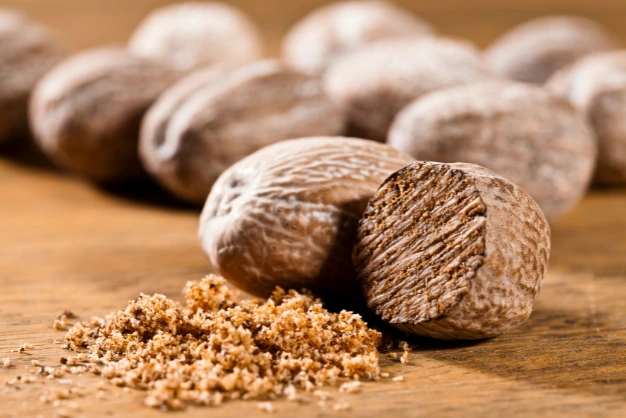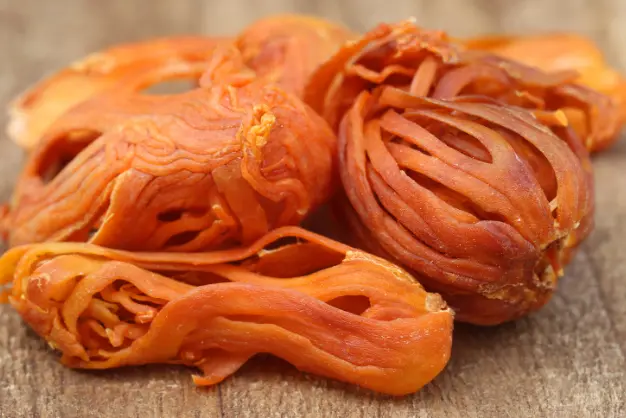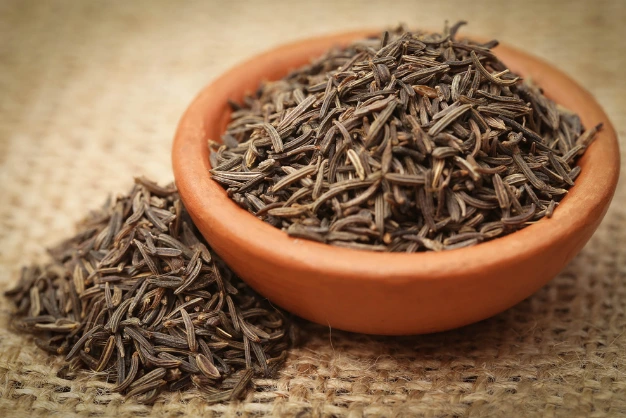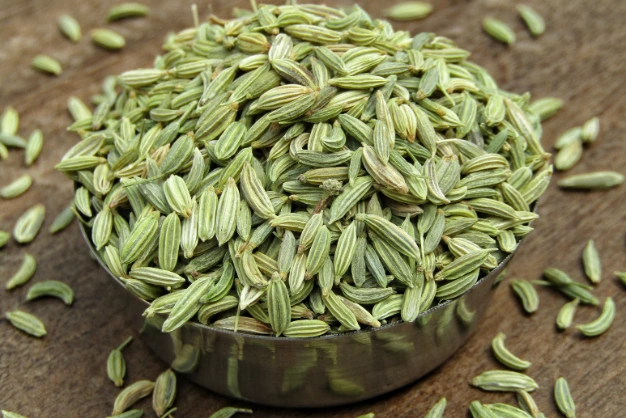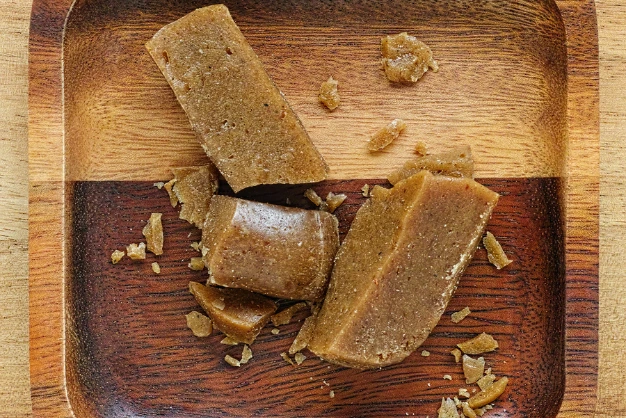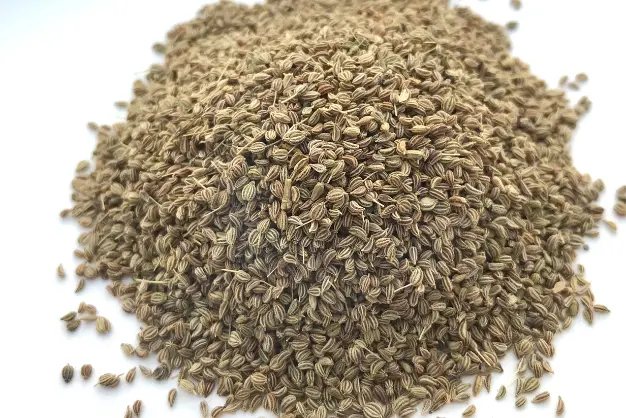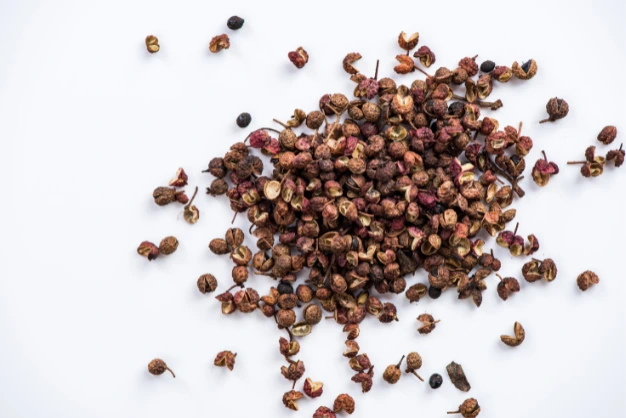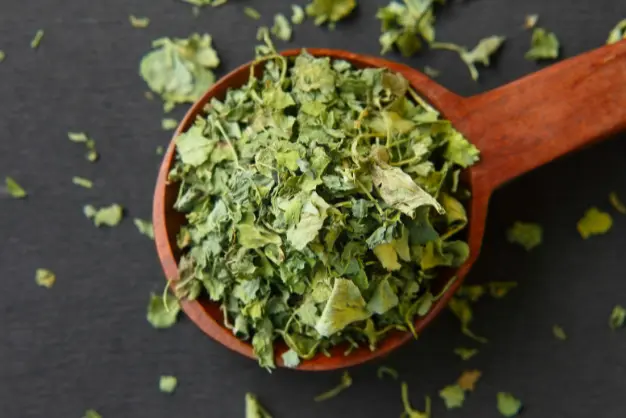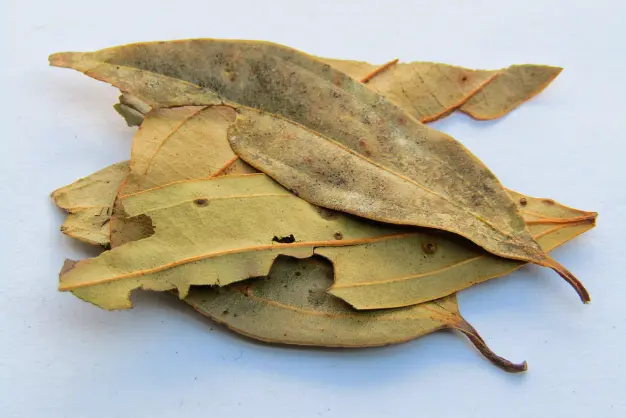Spices play a vital role in Indian cuisine. Whether it’s a sweet or savory dish, almost every Indian recipe includes spices in some form. Many dishes blend whole and ground spices to create unique flavors. In this blog, you’ll discover detailed insights into popular Indian spices, complete with images and their uses in everyday cooking.
India is known as the land of spices, with most of them grown locally and widely used in cooking to enhance the color, flavor, and aroma of food. These aromatic spices, often used in unique combinations, define the character of Indian cuisine. Beyond their rich taste and smell, many of these spices are also valued for their health-promoting properties.
For instance, turmeric and garlic are well-known for their natural healing and antibiotic qualities. Carom seeds (ajwain) and fennel aid digestion, while cardamom, cinnamon, cloves, and ginger are appreciated for their calming effects and respiratory support.
In this section, I’ll walk you through the most commonly used Indian spices, their purposes, and how they contribute to your meals. Knowing which spices suit your taste and body type can help you create dishes that are both flavorful and well-balanced.
A staple in nearly every Indian household is the “Masala Dabba” – a round spice box that keeps essential spices within easy reach while cooking. I’ll also be sharing tips on selecting and organizing your own Masala Dabba. Besides salt, here are some must-have spices typically found in Indian kitchens:
Indian cooking is incomplete without spices. From adding aroma to enhancing taste, each spice has a unique role in transforming simple ingredients into flavorful dishes. These spices are used daily across Indian homes to prepare everything from comforting dals to rich curries and dry sabzis.
Whether you’re sautéing onions with cumin seeds or finishing a curry with garam masala, these spices are always at the heart of Indian cuisine. Most of them are stored in a masala dabba for quick access and are often used in different combinations based on the dish and region.
Red chili powder in India is made from finely ground dried red chilies and is considered one of the most essential spices, especially if you’re just getting started with Indian cooking. With countless varieties available in the market, picking the right one can be a bit overwhelming.
Each household usually has its favorite type of chili powder, based on regional preferences and how spicy they like their food. To get started, choose one that suits your spice tolerance – whether you prefer mildly spicy, moderately hot, or extremely hot flavors.
If you’re not used to spicy food or prefer something milder, start with Kashmiri chili powder or Byadgi dabbi. Both are gentle on the palate, with Kashmiri giving a rich red color and Byadgi offering mild heat. I often use both interchangeably, as they deliver similar results when used in equal amounts.
If you’re someone who enjoys bold, fiery flavors, Guntur chili powder and Lavangi are great options to increase the spice level in your dishes. Many people also combine both mild and hot chili powders to create a well-balanced heat profile.
However, it’s important to keep in mind that excessive use of hot chilies can lead to skin irritation or digestive issues. It’s best to start with smaller amounts and adjust gradually based on your tolerance.
These tiny black seeds vary in size, from small to large, but the medium-sized ones are most commonly used in Indian cooking. Black mustard seeds are often added whole to hot oil for tempering in dishes like lentils, vegetables, rice, and more. Popular recipes that use this tempering method include Dal Fry, Poha, and Brinjal Curry (Eggplant Curry).
Whole mustard seeds also make their way into pickles, chutneys, and savory snacks where a crisp tempering is essential.
When fried, mustard seeds give off a mild heat and a nutty, slightly sharp aroma. It’s important to let them splutter in oil, or else they may taste bitter. Ground mustard is often used in pickles, Achari Tikka, or spicy North Indian curries like Achari Chicken and Achari Paneer, bringing in that classic tangy punch. Mustard is also a key ingredient in fermenting liquids like Kanji, especially in North India and Rajasthan.
In South India, mustard seeds are widely used alongside cumin and curry leaves, especially in dishes like Upma and Kadala Curry.
Cumin seeds are slender, dried pods commonly used in a wide variety of Indian dishes, including lentils, rice preparations, and vegetables. They’re often added to hot oil for tempering, sometimes paired with mustard seeds for enhanced flavor.
When roasted and ground into a powder, cumin has a warm, earthy, and slightly nutty taste. It’s a key ingredient in several spice blends like garam masala, sambar powder, curry powders, and rasam powder.
Cumin powder is frequently mixed with coriander powder and works well with red chili powder, turmeric, and salt – forming the base spice combo for many curries and stir-fried dishes.
Freshly roasted and ground cumin is also sprinkled over dishes as a finishing touch. It enhances the flavor of raita, spiced buttermilk (chaas), and is often added to salads, cooked vegetables, chaats, and snacks – even grilled sandwiches for that extra punch!
Fenugreek seeds are commonly used whole for tempering in Indian cooking. Due to their strong, slightly bitter taste with a hint of maple flavor, they are added in very small amounts. They’re a key ingredient in pickled dishes like achari masala and in panch phoran, the traditional Bengali five-spice mix.
Rich in protein, fenugreek seeds can also be sprouted and added to salads for an extra crunch. They are frequently used in lentil dishes and pickles, and are often recognized for their role in managing diabetes.
In powdered form, fenugreek is used in spice blends such as sambar masala and rasam powder, though only in small quantities to balance their bitterness.
Fenugreek powder is also an essential ingredient in Methi Laddoos, which are known to support postpartum recovery and boost lactation. Additionally, they help beat winter chills when combined with ingredients like jaggery, ginger, and warming spices.
Fenugreek also aids fermentation in certain traditional recipes, including lemon pickle, mango pickle, idli, and dosa batter.
Turmeric is widely known for its natural antibiotic and antimicrobial properties. Its signature golden-yellow color is hard to miss—and can easily leave stains. This root, similar in appearance to ginger, is actually a rhizome with a vibrant yellow-orange hue.
In Indian cooking, turmeric is typically used in powdered form to give dishes a rich golden color and a warm, earthy flavor. Only a small quantity is needed. Some popular dishes using turmeric include lemon rice and turmeric rice.
To reduce its raw taste, turmeric powder is often added to hot oil or cooked with warm food. This also boosts its antioxidant properties. When paired with black pepper, the absorption and effectiveness of turmeric increase significantly. Examples of its use include turmeric tea and turmeric latte.
Fresh turmeric root is also used in several preparations such as curries, turmeric shots, turmeric milk, pickles, and vegetable dishes.
Every Indian kitchen has a spice box, also known as a masala dabba, that keeps everyday spices within easy reach. It’s practical, traditional, and a must-have for quick and flavorful cooking.
Dried red chilies are a staple in Indian kitchens, used both whole and ground to bring color, heat, and depth to a dish. With countless varieties available, their flavor ranges from mild and sweet (like Kashmiri chilies, which offer rich color with minimal heat) to intensely hot and pungent types that add fiery spice but little color.
Red chilies are available in various forms—finely powdered, coarsely ground, flaked, or whole. Whole dried chilies are often broken or left as-is and added to tempering in dishes such as Dal Tadka to infuse flavor.
Many recipes combine both red chili powder and whole chilies for layered spice and aroma. Fresh red chilies also make an appearance in some dishes, offering a sharper, more vibrant taste. It’s worth noting that most commercial chili powders are blended from different chili types, unless specified otherwise.
Popular varieties like Mathania, Kashmiri, and Byadgi are known for their low heat and excellent flavor. However, due to frequent adulteration with lower-quality chilies, it’s best to buy from trusted, well-known brands to ensure authenticity and quality.
Coriander seeds offer a citrusy, slightly tangy flavor with subtle woody notes. They can be used whole, crushed, or ground—often roasted to enhance their aroma. In Indian cuisine, coriander is used in a variety of dishes including lentils, veggies, and meats. Coarsely crushed coriander is also sprinkled over kulchas, stuffed in kachoris, and added to parathas and cutlets for extra flavor.
Coriander is a key component in many spice mixes such as garam masala, curry powder, and other blended masalas. Its powdered form is generously used in cooking to add depth, body, and a well-rounded taste.
These seeds are frequently added to spice rubs, and when crushed, they go into soups, stews, curries, and stir-fries. They’re commonly paired with cumin seeds—whole or ground—to elevate the taste of Indian dishes.
Cinnamon comes in two main varieties: Ceylon cinnamon and Cassia cinnamon. Though both types share similar flavor profiles, they aren’t identical in strength or health effects. Cassia has a stronger, more intense flavor and is generally used in smaller quantities compared to Ceylon cinnamon.
Ceylon cinnamon is known for its delicate texture and visible layers, which makes it easier to break. On the other hand, Cassia is thicker and lacks visible layers. It’s also more affordable, making it more widely used despite being less refined.
Those with liver issues are often advised to limit Cassia cinnamon intake. Broken cinnamon sticks are commonly used in rice dishes, sweets, and lentil-based curries such as Chana Masala and Punjabi Chole.
Cinnamon is an essential ingredient in garam masala and is popularly added to Masala Chai, often alongside spices like cardamom, ginger, cloves, and black pepper. It’s also traditionally used for its medicinal properties, especially in treating respiratory problems.
Its mild, sweet aroma pairs beautifully with Indian gravies, dishes like makkhanwala, and even desserts. Ground cinnamon is commonly used in baking — for example, in fruit cakes, pies, and other festive treats.
Cloves have a strong, pungent aroma and a warm, spicy flavor. Just a few of them can bring a deep richness to your dish. They’re often added to pulao, biryani, meat curries, rich gravies, and even desserts like cakes and cookies.
Clove powder is rarely used on its own but is usually blended with other spices in garam masala and similar mixes. Cloves are also well-known for their oral health benefits—they help relieve toothaches and freshen breath. In fact, whole cloves are commonly used in paan to bind and hold the ingredients together.
Got too many cloves at home? You can store them in your kitchen cabinets, rice containers, or flour bags to keep away bugs. They’re even used in wardrobes to keep clothes smelling fresh and to deter insects.
Green cardamom pods are small and aromatic, offering a refreshing mint-like flavor with hints of eucalyptus. They can be used whole, split, or ground, and are popularly added to sweets, halwas, Indian desserts, and tea.
This spice is also a favorite in rich dishes like makhani gravies, pulao, biryani, marinades, and rubs. It’s an essential part of milk masala, giving flavor to milk when combined with saffron, nuts, and other warming spices. You’ll also find it in festive drinks like thandai and badam milk.
Empty cardamom pods (with seeds removed) can still be put to use—simply add them to tea leaves stored in a jar for a subtle infusion of flavor.
While using cardamom powder is convenient, it’s best to crush the seeds fresh just before cooking to extract the most flavor. Powdered cardamom tends to lose its aroma quickly, so it’s ideal for frequent users only.
You can add the powder at any stage during cooking, but when using whole or split pods, it’s best to sauté them in oil or ghee over low heat early in the cooking process so their flavor slowly infuses the dish.
Black pepper is a bold and pungent spice used both in whole and ground form. It plays a key role in many classic spice blends like garam masala and curry powder. Especially in South Indian cooking, it’s paired with mustard seeds and curry leaves to enhance the flavor and heat of a dish.
Whole peppercorns are added to dishes like pulao and biryani, and even to some sweet dishes to create a balanced taste. They’re also great in marinades, rubs, and flavoring eggs, mashed potatoes, gravies, and white sauces—adding depth to otherwise bland recipes.
Black pepper also shines in recipes like Mushroom Pepper Fry, Pepper Chicken, and various Indo-Chinese dishes. It’s commonly sprinkled as a final touch over lentils and other savory items to boost flavor.
While black pepper is one of the most used spices in Indian kitchens, it’s just the beginning. Many more spices contribute to the complexity of Indian cooking—and we’ll explore them too!
Star anise is a bold and aromatic spice often used in rich dishes like pulao, biryani, fried rice, kurma, fruit cakes, and a variety of meat-based recipes. With its strong, sweet licorice-like flavor—much like fennel seeds—this spice can make a noticeable impact even when used in small amounts.
It can be added to dishes whole or ground into a fine powder. Star anise is also a key ingredient in Chinese five-spice powder and is frequently used in traditional Chinese cooking. Beyond that, it fits well into teas, marinades, soups, and both meat and vegetable stews, adding a rich, deep aroma and taste.
Black cardamoms are larger than their green counterparts and have a bold, smoky aroma with a slightly pungent flavor. They’re not as commonly used, and some people may find the intense taste overpowering. If you prefer milder flavors, you can easily skip them in recipes without affecting the overall dish too much.
This spice is mostly used in savory dishes, especially in garam masala, and is added to rich gravies, biryani, and pulao. Whether used whole or ground, black cardamom brings depth and warmth to hearty Indian recipes.
Nutmeg is commonly used in South Indian cuisine for its warm, nutty, and slightly sharp flavor. It’s added in small amounts to tea, desserts, and select spice blends to enhance aroma and depth. You’ll often find it in sweet dishes, especially festive and traditional recipes.
Mace is the delicate, lacy outer covering of the nutmeg seed. It has a milder, slightly sweeter flavor compared to nutmeg and is known for its warm, aromatic profile. Used sparingly, mace adds elegance and depth to dishes like garam masala blends and rich Mughlai recipes.
Shahjeera, also known as caraway seeds or black cumin, resembles regular cumin but is finer and has a distinct flavor. It carries a mild sweetness with a hint of fennel-like aroma. Shahjeera is commonly used in rice dishes, curries, soups, and stews, and often appears in spice blends, especially for tempering.
Fennel seeds are widely used for their sweet, refreshing flavor. They’re commonly added to tea, desserts, and fennel-based syrups, and are often used in both sweet and savory dishes like lentils, pickles, pulao, and kurma.
Apart from cooking, fennel seeds are also enjoyed as a mouth freshener—either plain or coated with sugar after meals.
Asafoetida is a dried resin extracted from the ferula plant and is commonly available in block or powdered form. Known for its strong, distinctive aroma, hing is widely used in Indian cooking as both a digestive aid and a flavor enhancer.
The powdered form often contains wheat flour, so if you’re on a gluten-free diet, make sure to choose the block version or a certified gluten-free alternative.
Hing is typically added to hot oil during tempering, especially in dishes like dal, lentils, and certain vegetables. Since it’s a powerful stimulant, it’s best used in small quantities. A little goes a long way in recipes like Dal Tadka, where its flavor is essential.
Carom seeds are known for their strong, earthy flavor and excellent digestive benefits. They’re one of the key spices used in pakoras, where their sharp taste helps enhance the overall flavor.
Ajwain is added to a variety of dishes like parathas, Kabuli chana, and tomato-based gravies. Its intense aroma and punchy taste add a bold dimension to simple recipes. Because of its strong nature, it’s typically used in very small amounts.
Dry ginger, usually available in powdered form, has a strong, spicy kick and a warm aroma. It supports digestion and is often used in traditional Indian remedies and spice blends for its intense flavor.
In recipes, dry ginger powder can be used in place of fresh ginger or garlic when needed, though each brings a unique taste to the dish. Fresh and dried forms of ginger offer distinct flavors, so they’re not always interchangeable in cooking.
Amchur, or dry mango powder, is made from dried unripe mangoes and is known for its tangy, citrusy punch. It adds a sour and zesty flavor to many Indian dishes, especially dals, chaats, vegetables, and meat preparations.
Often sprinkled at the end of cooking, it brightens up dishes like salads, pakoras, and street-style snacks, giving them a refreshing twist.
Saffron is one of the most luxurious spices, used sparingly due to its high cost. While it’s best known for adding fragrance and golden color to Indian sweets, it’s also featured in savory dishes like biryani and milk-based drinks made with saffron syrup.
In desserts, saffron is often combined with pistachios (as in the famous kesar-pista flavor) and used in treats like ice creams and kulfis, adding richness and royal aroma.
Sichuan pepper is commonly used in Chinese and Indo-Chinese cuisine for its bold heat and numbing spice. In India, it is often found in spicy condiments like Schezwan sauce or chutneys, adding an intense punch to stir-fries, noodles, and snacks.
Kasuri methi is a fragrant herb made by drying fenugreek leaves. Slightly bitter yet aromatic, it adds a unique depth of flavor to many Indian dishes. The name “Kasuri” comes from Kasur, a region in Pakistan known for growing exceptionally flavorful methi leaves.
In modern times, various hybrid varieties are available, but the flavor of traditional Kasuri methi remains unmatched. Using fresh fenugreek leaves as a substitute won’t give the same aroma or taste.
Kasuri methi is widely used in North Indian dishes like Paneer Butter Masala, Butter Chicken, and Chicken Tikka Masala, where it enhances the richness and gives a signature finish.
There’s truly no perfect substitute for Kasuri methi—it’s one of those herbs that transforms a good dish into a great one!
Bay leaves bring a subtle aroma and earthy flavor to dishes like rice, lentils, beans, stews, and curries. Though often removed before serving, their contribution to the dish’s aroma is unmistakable. They are also commonly used in spice blends such as garam masala and meat masala.
You’ll find bay leaves in rich recipes like biryani, pulao, and meat-based dishes like lamb curry. However, it’s important to avoid using old bay leaves that have been stored too long, as they tend to develop a bitter taste.
Craving restaurant-style Indian dishes at home? Whether you’re exploring a spice up house of Indian cuisine menu or just want to recreate your favorite curries, understanding Indian spices is the first step. The right mix of spices can turn a simple dish into a flavorful restaurant-like experience—right from your kitchen!
Indian cooking isn’t just about recipes—it’s about the magic of spices. Every spice, whether it’s the smoky depth of black cardamom or the sweet warmth of cinnamon, plays a crucial role in building the rich, layered flavors Indian cuisine is known for.
From daily basics like cumin and turmeric to luxurious touches like saffron and kasuri methi, these spices define the heart of every dish. Even herbs like bay leaf and dried fenugreek add aroma and authenticity that can’t be replicated.
If you’re just getting started, don’t be overwhelmed. Begin with the essentials, explore combinations, and trust your palate. With time, you’ll not only understand the spices—you’ll begin to feel them, balance them, and truly bring your food to life.
So stock up, smell often, cook slowly… and let the spices lead the way.
